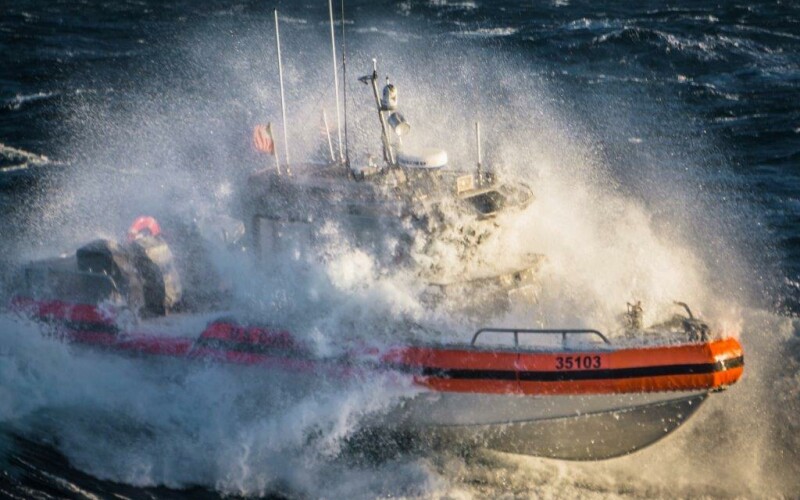MetalCraft Marine, Watertown, N.Y., was recently awarded a second contract by USCG for the new Long Range Interceptor III Program. Long Range means 200 NM.
MetalCraft Design has made many incremental improvements to the design from direct input from Coast Guard crews around the country. Improvements include a finer bow entry, improved collar design by Wing, window and door improvements for better egress/ingress, full walk around cabin, higher thrust jets, redundant bucket controls, redundant sea water systems, independent crew heating and other small yet extremely important details, according to MetalCraft's partner/contracts manager Bob Clark.
"The 11-meter LRI II has been a very successful platform for the Coast Guard," Clark said. “The LRI was the first design to successfully navigate the recovery bay at the transom of the 418' National Security Cutter. The LRI can operate over the horizon from the mother ship and can travel 236 nautical miles on any given mission on plane giving it a very wide swath to patrol after the mother ship’s electronics have detected something suspicious.”
The 35'x11'1"x4'8" LRI IIIs will have twin Cummins 6.7L diesels, producing 473 hp each, that power two Kongsberg A29 waterjets, through ZF 280 marine gears, to a 40-knot speed and are mission capable to sea state 5 (13') conditions. The boats will have a closed or open cabin arrangement that allows them to be operated nearly completely open in good weather conditions or fully closed in bad weather.
The boats, which will have 28" drafts and be built using ISO 12215 Category A Unlimited aluminum, will operate at sea in extreme conditions and the LRI can be recovered at sea state 5 at up to 12 knots. The success of the NSC program in apprehending drug smugglers and illegal immigrants "has been nothing short of remarkable and has included several drug busts that set new records in the U.S. war on drugs," Clark said.
The vessels will feature a David Clark Co. wired crew communications system which will allow the crew to maintain communication with the LRI or the MSC (military sealift command) mother ship for instructions via wireless to VHF connectivity. The system has a 300' range which allows the crew to communicate while boarding another vessel in close proximity. The David Clark system replaced a previous system that could not withstand the rigors of the LRI mission.
The advanced navigation system is produced by Raymarine and FLIR. Suspension seating is supplied by Shockwave and Shoxs.
The boats will have a portable ballistic panel package designed to be mounted to the boat’s forward/side sections in eight minutes for specific high threat missions. The ballistic package is designed to protect the five-person crew from a 200° field of fire. The panels are provided by Safariland and are mounted to external brackets on the fixed superstructure and sliding doors. The open cabin arrangement allows for crew to provide return fire over a wide range with good crew protection.
Carrying a crew of five and up to 10 passengers, 17 new LRI IIIs will be delivered over the next five years.
The goal is to make a best-in-class platform for USCG operations in both Equatorial and Arctic locales that gets the crew home safely everyday, said Clark. The new class is technically called Cutter Boat Large CB-L-LRI III and will be deployed from the National Security Cutters and new CG Polar Security Heavy Ice Breakers.




